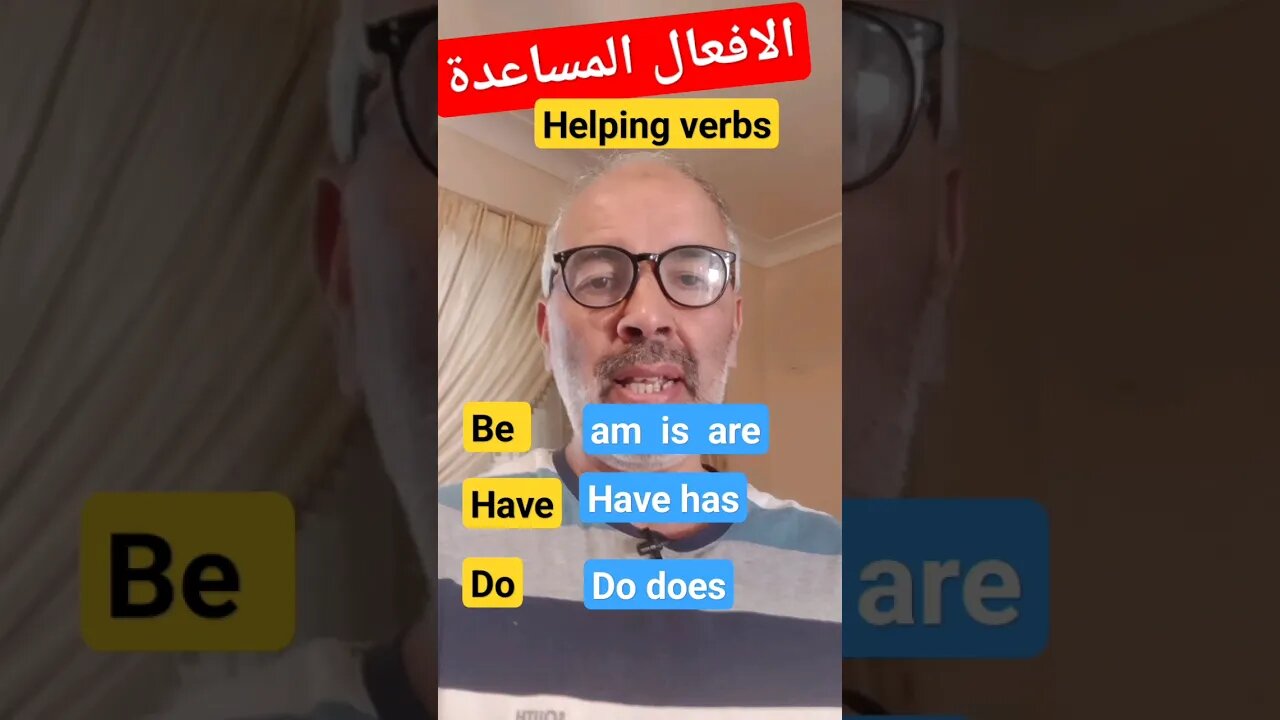Premium Only Content

الافعال المساعدة في الانجليزية #short #shorts #viral
Helping verbs, also known as auxiliary verbs, are used in conjunction with main verbs to express various nuances of meaning, tense, aspect, mood, and voice in a sentence. They assist in forming different verb tenses, asking questions, making negatives, and expressing possibilities, obligations, and conditions.
Common helping verbs in English include:
"Be" verbs: am, is, are, was, were, being, been
Example: She is studying for her exam.
"Have" verbs: have, has, had, having
Example: They have finished their homework.
"Do" verbs: do, does, did, doing
Example: He does his chores every day.
Other helping verbs include modal verbs such as can, could, may, might, must, shall, should, will, would, and ought to.
When using helping verbs, it's important to understand their placement in a sentence. In simple tenses, the helping verb comes before the main verb, while in continuous or progressive tenses, the helping verb is combined with "be" and the present participle (-ing form) of the main verb.
Understanding and correctly using helping verbs can greatly enhance your ability to express yourself accurately and effectively in English.
I hope this gives you a better understanding of helping verbs! If you have any more specific questions or need further assistance, feel free to ask.
-
 28:36
28:36
Afshin Rattansi's Going Underground
1 day agoDoug Bandow: ENORMOUS DAMAGE Done to US’ Reputation Over Gaza, Trump ‘Easily Manipulated’ by Israel
33.4K31 -
 2:45:13
2:45:13
Barry Cunningham
16 hours agoCBS CAUGHT AGAIN! CHICAGO A MESS! LISA COOK IS COOKED AND MORE LABOR DAY NEWS!
122K51 -
 6:39:17
6:39:17
StevieTLIVE
10 hours agoMASSIVE Warzone Wins on Labor Day w/ Spartakus
37.9K1 -
 10:46:42
10:46:42
Rallied
17 hours ago $18.27 earnedWarzone Challenges w/ Doc & Bob
204K4 -
 3:26:25
3:26:25
Joe Donuts Live
10 hours ago🟢 Lost in Space with My Clones: The Alters Adventure Begins
38.6K5 -
 7:20:22
7:20:22
Dr Disrespect
18 hours ago🔴LIVE - DR DISRESPECT - TRIPLE THREAT CHALLENGE - WINNING AT EVERYTHING
227K12 -
 2:35:33
2:35:33
Chrono
11 hours agoBirthday-eve Stream | Helldivers II
33.3K1 -
 54:40
54:40
BonginoReport
1 day agoLABOR DAY SPECIAL! The Best of Nightly Scroll - Nightly Scroll w/ Hayley Caronia (Ep.124)
140K16 -
 2:39:21
2:39:21
Joker Effect
9 hours agoReviewing the downfall of Kick Streaming. Kick streamers welcome to Rumble! Stake bombshell found!
39.8K1 -
 1:06:10
1:06:10
Russell Brand
18 hours agoThe Greatest Lie Ever Told? - SF625
105K136